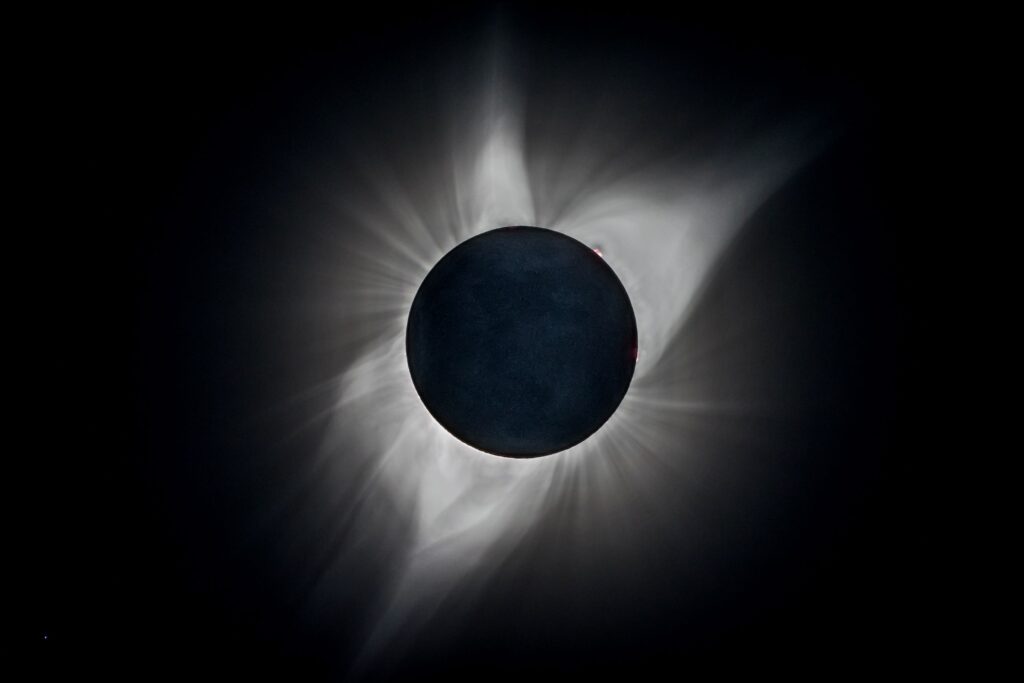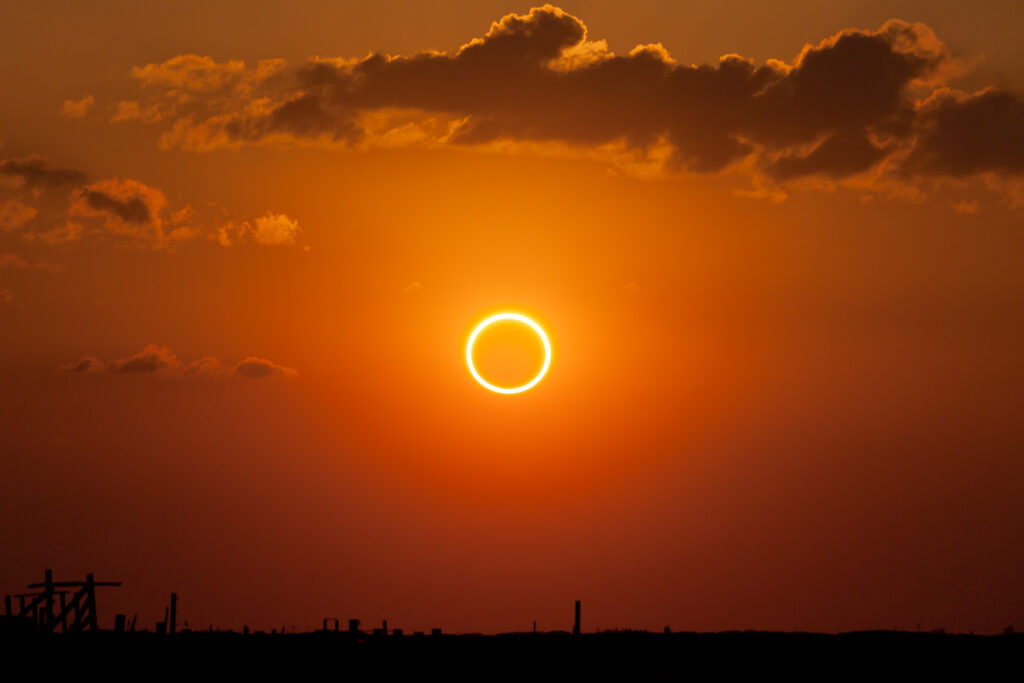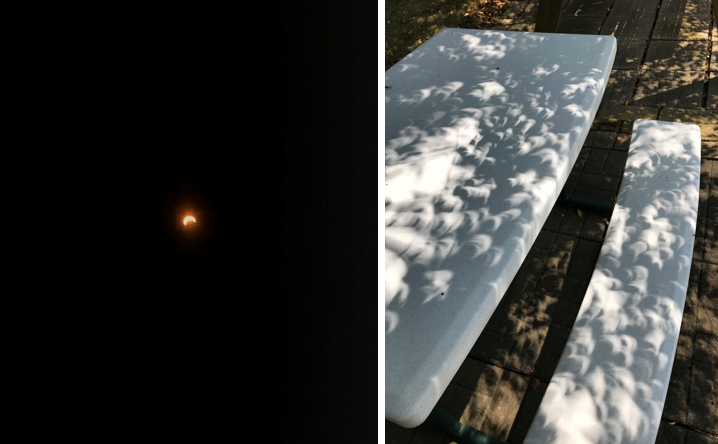On Saturday, October 14th, 2023, an annular eclipse was visible across North America. Unfortunately for people residing in Chapel Hill and Carrboro, the sun was behind the clouds. But fear not! The next eclipse visible from the US will happen in a few months.
There are three major types of solar eclipses: total, annular, and partial. A hybrid eclipse is a rare type where some areas of Earth will see an annular eclipse and others will see a total eclipse.
Total solar eclipse
A total solar eclipse occurs when the moon moves between the sun and the earth and completely blocks the light from the sun. For these eclipses, there is a “path of totality” where the total eclipse will be visible. Those living outside of this path will see a partial eclipse. The actual totality (when the moon completely covers the sun) during an eclipse lasts only a few minutes. However, a partial eclipse will be visible leading up to and after totality. At totality, it is possible to see the outermost layer of the sun’s atmosphere, called the corona.

The next total solar eclipse visible from North America will happen on April 8th, 2024 (yes, I have had this in my calendar since the last Eclipse Across America in 2017). You can use this interactive map to determine your view of the eclipse in 2024 (or to plan your travel to somewhere within the path of totality).
Annular eclipse
The name “annular” comes from Latin “annulus” meaning ring. An annular eclipse, also known as a “ring of fire” eclipse, happens when the moon completely lines up with the sun but is far away from the earth. The moon, therefore, appears smaller and does not entirely cover the sun, which leaves a part of the sun visible in the shape of a ring. It is important to wear eye protection at all times during an annular eclipse, as there is always part of the sun visible.

Partial eclipse
When the moon is not perfectly in line with the sun and the earth a partial eclipse occurs. Additionally, during a total or annular eclipse, those not in the path of totality will see a partial eclipse. The moon will appear to cover a different amount of the sun depending on where you’re located in relation to the path of totality. This map from NASA shows the path of totality for the 2024 eclipse and the portion of the sun that will be covered in areas outside that path. It is important to wear eye protection any time you look at a partial eclipse.

Eclipse safety
Safety is a crucial part of eclipse viewing. Eye protection (e.g. special solar eclipse glasses) must always be worn when looking at the sun. The only time it is okay to look at an eclipse without eye protection is during the few minutes of totality. At this time, there is no light visible from the sun. If you look at the sun any other time (during an eclipse or in your day-to-day life), your eyes could be irreparably damaged.
Eclipse glasses are different from regular sunglasses as they are made of a material that blocks all infrared and ultraviolet light which protects your eyes from harmful rays.

A solar eclipse is an incredible phenomenon. During the moments when the moon completely covers the sun in a total solar eclipse, the sky darkens, and animals begin to exhibit nighttime behavior. Even though there are multiple eclipses per year, you might not always be able to see them depending on where on earth the eclipse takes place and where you live. So mark your calendars now; you won’t want to miss the eclipse on April 8th, 2024!
Peer editors: Molly Parrish and Bhavyaa Tyagi